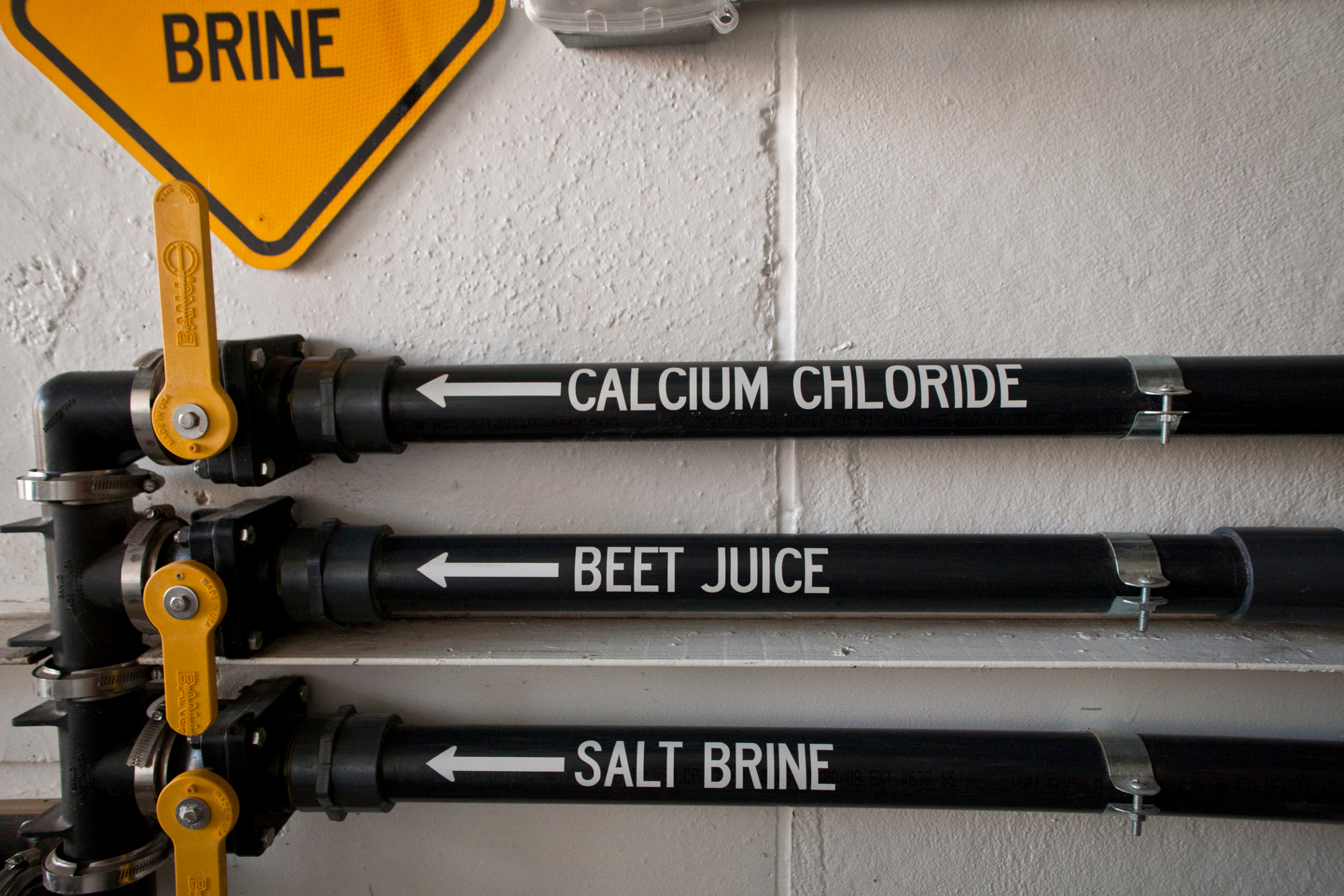Earlier this month I saw a press release issued by the Morton Arboretum that discussed their use on a product containing beet juice to deice roads and trails. The mixture is quicker and less toxic than using salt alone. It sounds like a joke, but it’s not. Beet juice is actually used as an additive and spreader for salt, keeping the salt (Chlorides) in the solution as a slurry or brine down to much lower temperatures.
The use of beet juice as a deicer was actually pioneered here, in Minnesota, by the Minnesota Department of Transportation. The huge sugar beet industry in the Red River Valley of Minnesota/North Dakota, and the massive need for re-use of sugar beet waste helped create a market for it, and of course it helps that we get a lot of snow and ice to try it out on. I got familiar with beet juice as a deicer about 10 years ago. My firm, Kestrel Design Group, specifies it in our Master Plans and Operations and Maintenance Plans. (Sodium Chloride is the least expensive deicer, but also the most toxic. I avoid if at all possible. Magnesium Chloride and Calcium Chloride are both less biologically impactful than Sodium Chloride and therefore preferable. You can read more here for recommended ways to minimize salt damage to trees and plants).
Total maximum daily load (TMDL) is a term you will frequently see used in discussions about pollution; it is defined by the Environmental Protection Agency as a calculation of the maximum amount of a pollutant that a waterbody can receive and still safely meet water quality standards. All 5 major streams in Minneapolis – where I live and work – are now total maximum daily load (TMDL) impaired for Chloride. Minneapolis is the Headwater State for the Mississippi, and yet its streams are closer to brine than fresh water creeks. Being classified as TMDL impaired is bad news for our streams and their receiving water bodies. We’re pickling our landscape with road salt. We need new deicers, and beet juice is a good addition.
According to the press release issued by Morton Arboretum,
Beet juice is an effective alternative to salt alone because it lowers the freezing point of water to as low as -20 degrees. Salt only prevents water from freezing at temperatures of 5 degrees or higher. Salt also bounces from the roads; adding beet juice lowers the bounce rate from 30 percent to 5 percent, reducing the amount of salt used on the roads. With the new product, the Arboretum is using nine times less salt, saving nearly $14,000 in material costs.
The beet juice blend works by lowering the freezing temperature of the brine that’s used to pretreat roads. Roads that are pretreated with the stuff help prevent salt piles from clumping and freezing, and mixing beet juice and brine makes the treatment effective at lower temperatures. It performs as well as traditional brines but is less corrosive, it reuses a byproduct of processed beets, and it is easier on our vehicles, pavements, plants, and waterways. This alternative deicer has been around for a number of years, although it hasn’t yet been as widely accepted as other commercial alternatives, but I hope it will be. I’m a fan.
References
http://usatoday30.usatoday.com/weather/research/2008-02-21-beeting-ice_N.htm
Minnesota Pollution Control Agency’s (MPCA’s) Road salt and water quality website
L. Peter MacDonagh is the Director of Science + Design at The Kestrel Design Group.
Photo credit: Emily Cikanek/Courtesy of Metropolitan Planning Council






Leave Your Comment